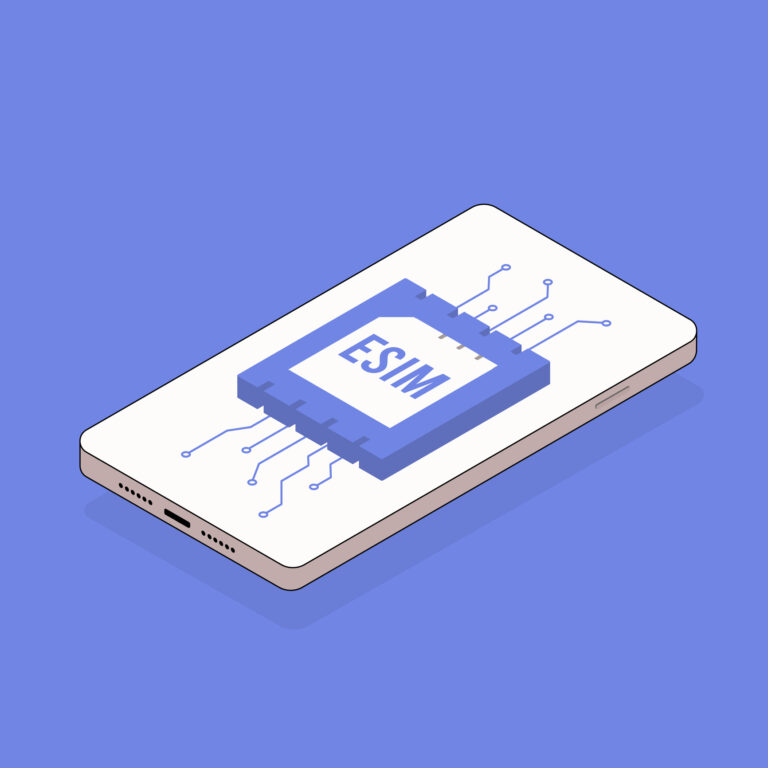
The world is constantly shrinking, and with it, our need for seamless, global connectivity is exploding. Gone are the days of fumbling with tiny physical SIM cards, searching for local stores in foreign lands, or dreading exorbitant roaming charges. Enter the eSIM – the embedded SIM that’s revolutionizing how we connect.
For forward-thinking entrepreneurs and businesses, this isn’t just a technological shift; it’s a golden opportunity. Becoming an eSIM distributor means positioning yourself at the forefront of this digital revolution. It means offering a truly convenient, flexible, and cost-effective solution to a rapidly growing market.
If you’re ready to tap into this immense potential, this guide is for you. We’ll break down everything you need to know about becoming a successful eSIM distributor, from understanding the market to launching your own thriving business.
DON’T MISS OUT ON THE RAPIDLY EXPANDING E-SIM MARKET.
Start your journey as an eSIM distributor today!
What Exactly is an eSIM, and Why Does it Matter?
Before diving into distribution, let’s quickly clarify what an eSIM is. Unlike a traditional SIM card, an eSIM is a small chip embedded directly into a compatible device. This chip can be remotely provisioned with different mobile network profiles. This means no more physical swapping! Users can simply download a new plan from their device settings, offering unparalleled flexibility.
This technology is a game-changer for several reasons:
- Convenience: No more physical SIMs to lose or swap.
- Flexibility: Easily switch carriers or plans on the go.
- Cost-effectiveness: Often cheaper than traditional roaming.
- Global Reach: Access to local networks in numerous countries.
- Device Integration: Ideal for smartphones, wearables, tablets, and a growing number of IoT devices.
The market for eSIMs is booming. Projections suggest the travel eSIM market alone will reach $10 billion by 2028, with billions of smartphone connections globally utilizing eSIM technology. This isn’t just a niche product; it’s becoming mainstream.
Understanding the Role of an eSIM Distributor
As an eSIM distributor (often also referred to as an eSIM reseller), you essentially act as a bridge between a wholesale eSIM provider and the end-user. You purchase eSIM data plans in bulk at eSIM wholesale rates and then sell them to your customers, often with your own branding and pricing.
This business model offers significant advantages:
- Low Overhead: No physical inventory to manage.
- Scalability: Easily expand your offerings and reach.
- High Demand: Cater to travelers, digital nomads, businesses, and IoT device users.
- Recurring Revenue Potential: Through top-ups and repeat purchases.

Your Step-by-Step Guide to Becoming an eSIM Distributor
Ready to embark on this exciting journey? Here’s a practical roadmap:
Step 1: Research and Define Your Niche
Before anything else, understand who you want to serve. The eSIM market is broad, but specific niches can be incredibly lucrative.
Consider:
- Target Audience: Are you focusing on international travelers, business users, IoT device manufacturers, or perhaps a specific demographic like digital nomads?
- Geographic Focus: Will you cater to a global audience or concentrate on specific regions or countries?
- Unique Value Proposition: What makes your offering different? Is it competitive pricing, exceptional customer support, specialized data plans, or a unique platform experience?
A clear understanding of your target market will guide all subsequent decisions.
Step 2: Choose a Reliable eSIM Wholesale Provider
This is arguably the most critical step. Your success hinges on the quality and reliability of your wholesale partner. Look for a provider that offers:
- Global Coverage: Extensive network reach in countries your target audience frequents.
- Competitive Wholesale Pricing: To ensure healthy profit margins.
- White-Label Solutions: Allowing you to brand the eSIM offering as your own. This is key for building your brand identity.
- Robust APIs and SDKs: For seamless integration with your website, app, or existing systems.
- User-Friendly Management Platform: A dashboard to manage eSIMs, create plans, track usage, and support customers.
- Reliable Customer Support: For you as a distributor, as well as potential support resources for your end-users.
- Flexible Data Plans: The ability to offer various packages (e.g., daily, weekly, monthly, regional, global).
- Compliance with GSMA Standards: Ensures interoperability and security.
Many providers offer reseller programs, each with its own strengths. Take your time to compare and choose a partner that aligns with your business goals.
Step 3: Develop Your Platform and User Experience
Once you have a wholesale partner, you need a way to sell and manage eSIMs for your customers. This could be:
- A Dedicated Website: An e-commerce platform where customers can browse, purchase, and manage their eSIMs.
- A Mobile App: Providing a convenient way for users to activate, top up, and monitor their data.
- Integration with Existing Systems: If you already have a travel agency website or a business portal, you can integrate eSIM sales directly.
Focus on creating a seamless and intuitive customer journey. This includes:
- Easy Activation: Clear instructions and QR code delivery.
- Simple Plan Selection: Clearly laid out data packages and pricing.
- Hassle-Free Top-Ups: Enabling users to easily add more data.
- Comprehensive Support: FAQs, chat support, or a dedicated customer service team.
Remember, the goal is to make the eSIM experience as effortless as possible for your customers.
Step 4: Craft Your Pricing and Business Model
How will you make money? This involves setting your retail prices for the eSIM data plans.
Consider:
- Wholesale Costs: Your base cost from your provider.
- Competitor Analysis: What are other eSIM resellers charging for similar plans?
- Target Margin: How much profit do you want to make on each sale?
- Value-Added Services: Can you bundle eSIMs with other services (e.g., travel insurance, VPNs) to increase perceived value?
- Subscription vs. Pay-as-you-go: Which model best suits your audience?
You’ll also need to establish a clear business model. Will you primarily sell to individuals (B2C), businesses (B2B), or both? This will influence your marketing and sales strategies.

Step 5: Master Your Marketing and Promotion
Even the best product needs effective marketing. Here’s how to get the word out:
- Search Engine Optimization (SEO): This is where keywords like “eSIM reseller” and “eSIM distributor” come into play. Optimize your website content, blog posts, and product descriptions for these terms to attract organic traffic.
- Content Marketing: Create valuable blog posts, guides, and FAQs that educate potential customers about eSIMs and their benefits.
- Keyword Integration: Naturally weave your target keywords throughout your website copy.
- Digital Advertising: Utilize platforms like Google Ads and social media advertising to reach your target audience.
- Social Media Marketing: Engage with your audience on platforms where they spend their time, sharing tips, promotions, and customer testimonials.
- Partnerships: Collaborate with travel agencies, airlines, hotels, or tech review sites to expand your reach.
- Public Relations: Share your unique story and offerings with relevant media outlets.
Highlight the pain points eSIMs solve: avoiding roaming fees, instant connectivity, and ultimate flexibility.
Step 6: Launch, Monitor, and Optimize
Once everything is set up, it’s time to launch! Start with a soft launch to a smaller audience to gather feedback and iron out any kinks.
After launch, continuously monitor your performance:
- Sales Data: Track which plans are most popular, peak sales times, and customer demographics.
- Customer Feedback: Pay attention to reviews and direct feedback to identify areas for improvement.
- Website Analytics: Understand how users are interacting with your platform.
- Marketing Campaign Performance: Analyze the effectiveness of your advertising and promotional efforts.
Use this data to refine your offerings, adjust your pricing, and optimize your marketing strategies for continuous growth.
Navigating Challenges and Embracing Opportunities
While the eSIM distributor landscape is promising, be aware of potential challenges:
- Consumer Awareness: Many people are still unfamiliar with eSIM technology. Education will be a key part of your marketing efforts.
- Device Compatibility: Not all devices support eSIMs. Provide clear compatibility lists and guidance for your customers.
- Regulatory Landscape: Stay informed about telecommunications regulations in your target markets, especially regarding data privacy and KYC (Know Your Customer) requirements. Your wholesale provider should be a good resource here.
- Competition: As the market grows, so will the number of eSIM resellers. Differentiate yourself through excellent service, unique offerings, or competitive pricing.
However, the opportunities far outweigh the challenges. The shift towards embedded connectivity is undeniable. By becoming an eSIM distributor, you are not just selling a product; you are selling a modern, convenient, and essential service that empowers people to stay connected effortlessly, wherever they are in the world.
UNLOCK GLOBAL CONNECTIVITY FOR YOUR CUSTOMERS.
Sign up for your eSIM reseller account and access wholesale rates instantly!
Conclusion
Becoming an eSIM distributor is an exciting venture with significant growth potential. By carefully planning your strategy, partnering with a reliable eSIM wholesale provider, creating a user-friendly experience, and effectively marketing your services, you can build a highly successful business in the burgeoning world of digital connectivity. The future is eSIM, and you can be a vital part of making it accessible to everyone.


